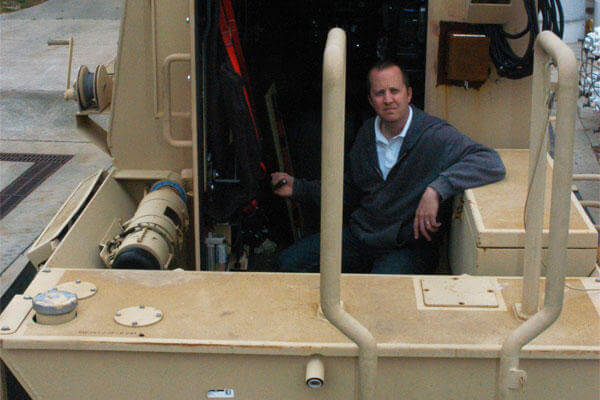PANAMA CITY, Fla. -- The U.S. Marine Corps' Mine Resistant Ambush Protection (MRAP) Buffalo vehicles were designed to protect Marines from Improvised Explosive Devices, and the Navy is improving MRAPs by upgrading them with a new Rear-Door Assist (RDA) mechanism.
Naval Surface Warfare Center Panama City Division (NSWC PCD) Buffalo Systems Deputy Project Engineer Steven (Tate) Carow said the Buffalo MRAP trucks currently do not have a power system to assist opening its rear door.
"Currently, the vehicle's rear door requires a manual effort to open, and it weighs approximately 500 pounds. It is designed so one person can open it on flat ground. However, should there be an emergency situation like a rollover, if the vehicle has to park on uneven terrain, or even if the heat of the environment affects the door frame's shape, the door can bind and become difficult to open," said Carow.
The Buffalo program office provided specific requirements for the RDA system to meet. With a critical requirement to improve crew survivability, some specific requirements addressed included time-to-open, reliability and environmental protection.
NSWC PCD engineers designed the RDA solution to meet these requirements, while utilizing modified commercial-off-the-shelf (COTS) hardware to reduce cost and production schedule.
The RDA system can be activated from two locations inside the vehicle and one location outside the vehicle. Multiple internal locations are provided to ensure the crew can open the door in the event of a roll-over. The external switch can be activated by first responders in the event the crew is incapacitated.
Carow said that the COTS cylinders for the RDA required only a minimal modification.
Another benefit to the team's modified COTS solution Carow pointed out is the system is self powered.
"The system has its own battery, which is charged from the truck's alternator, so even if the truck's batteries become disabled, the system has enough stored energy to open the door many times," said Carow said.
Carow explained that should the RDA battery fail for some reason, there is a backup to the normal battery-powered activation.
"If all else fails, we have a manual way to crank out the pump's hydraulic cylinder. A Marine can pull out a handle, which fits into a slot in the integrated hydraulic cylinder, and he or she can then simply use this to jack the door open," Carow said.
The Marine Corps Systems Command Assistant Program Manager for the Cat III Buffalo MRAP, Albert Shaw, said the collaboration with NSWC PCD was a win-win situation because the partnership is producing effective solutions that in many cases can be shared by several Department of Defense (DoD) entities.
"This partnering for solutions is exemplary of the DoD acting as good stewards of taxpayer's dollars," said Shaw. "It's American ingenuity at its best."

























